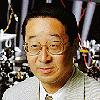- JST Home
- /
- Strategic Basic Research Programs
- /
 ERATO
ERATO- /
- Research Area/Projects/
- Completed/
- YAMAMOTO Quantum Fluctuation
YAMAMOTO Quantum Fluctuation

Research Director: Yoshihisa Yamamoto
(Professor, Department of Electrical Engineering & Applied Physics, Stanford University / Distinguished Technical Member, NTT Basic Research Laboratories)
Research Term: 1993~1998
One of the major events of 20th-century physics has been the founding and subsequent evolution of quantum mechanics. First, a strange curiosity that went strongly against intuition and caused decades of debate that straddled both basic physics and philosophy, quantum mechanics has become a powerful force in our understanding of atomic and sub-atomic physics, as well as a potent tool in the development of new technology.
At the heart of quantum mechanics are the Heisenberg “uncertainty principle” and the Yon Neumann “wavepacket-reduction postulate,” which put strong limits on quantum systems as well as what can actually be observed. However, Yoshihisa Yamamoto claims that the time has arrived in which the uncertainty principle and wavepacket reduction can be better understood, and even manipulated as a tool in the development of solid state systems as well as new technologies based on this understanding.
Research Results
Quantum measurement and information: A new quantum theory of repeated or continuous nondestructive measurements was developed of a single quantum system for which the influence of a previous measurement on a subsequent measurement should be properly formulated. By applying this theory to successive measurements on a single system it was shown that a single wave function cannot be measured. This finding also denies any ontological meaning of the quantum wave function and places a fundamental limit on external force detection with single quantum systems.
Squeezed state: Studies showed that the fluctuation noise is “malleable,” that intensity noise can be reduced if the phase noise is allowed to increase, and vice versa. In other words, light can be squeezed. As proof of this concept an efficient semiconductor laser which produces this number/phase squeezing of the states of light was developed.
Cavity quantum electrodynamics: Much was learned about con-trolling spontaneous emission by modifying the electromagnetic field mode using a semiconductor microcavity with a hydrogen-atom-like object “exciton”: a positive charge hole as an atomic hydrogen nucleus, and an electron trapped as a hydrogenic wave function. Also, an effort was made to generate both a stimulated coherent light wave and a coherent matter wave, a completely new type of optics. Though first experiments were not successful, much information was learned about such systems.
Mesoscopic physics: The quantum statistical effects involving the scattering of electrons (fermions) and photons (bosoms) were studied. This project demonstrated fermionic interference, mesoscopic electron collisions. This was the first time to observe two particle interference for fermions.
Microscopy and single-atom manipulation: Attempts were made to construct quantum devices at the most basic level: single atoms and particles. One major result was the first experimental observation of the Coulomb blockade in a single atomic junction.

·The above figure depicts the mechanism to suppress quantum fluctuation in a semiconductor laser diode. An amplitude squeezed state, the photon number fluctuation is suppressed, can be realized through the mechanism.

·Fig. (a) shows the quantum fluctuation of ordinary electro-magnetic fields, indicating two orthogonal amplitude components and E(t) in the time domain. Fig. (b) shows the squeezed state where the amplitude fluctuation is suppressed; Fig. (c) depicts the squeezed state in which the phase fluctuation is suppressed.














